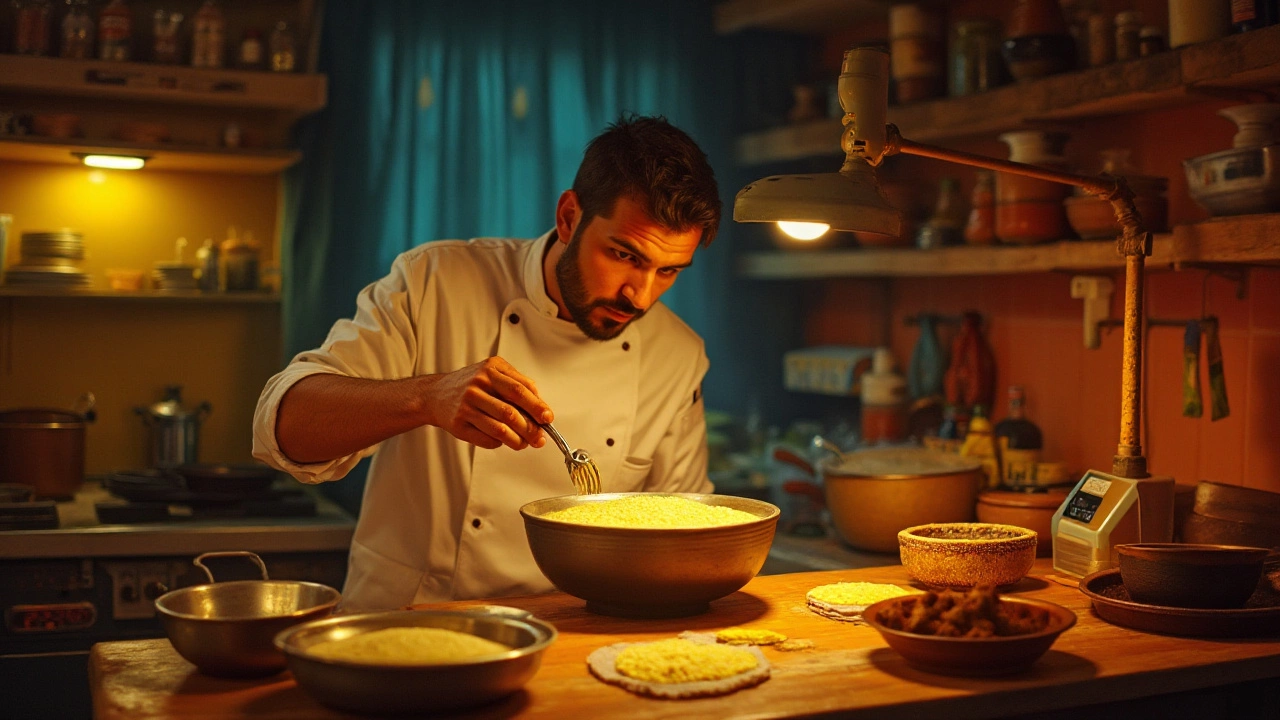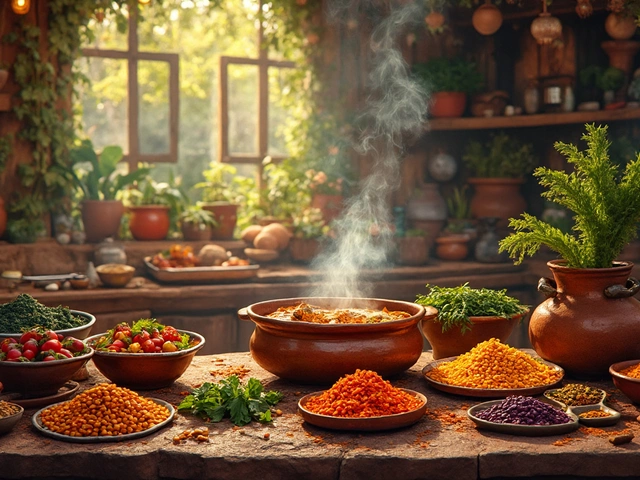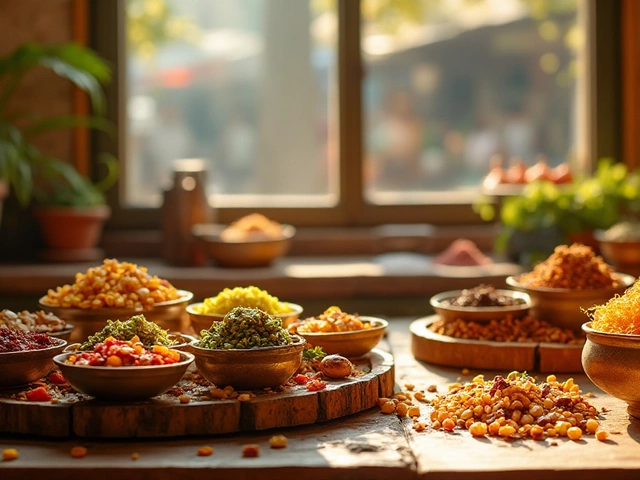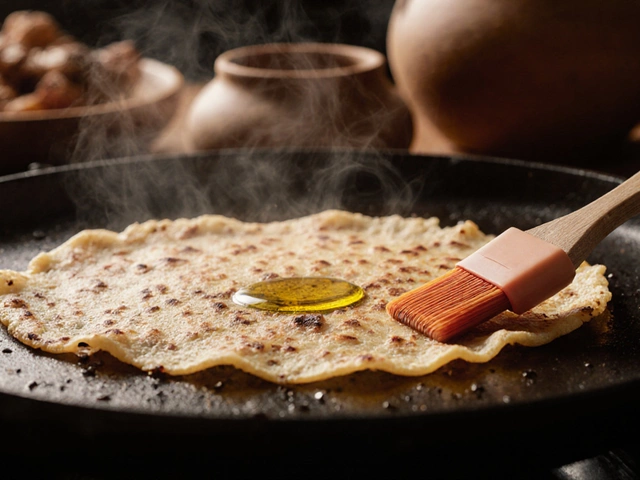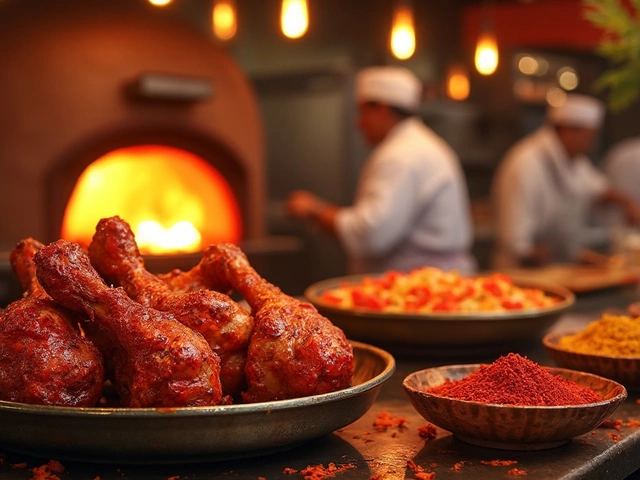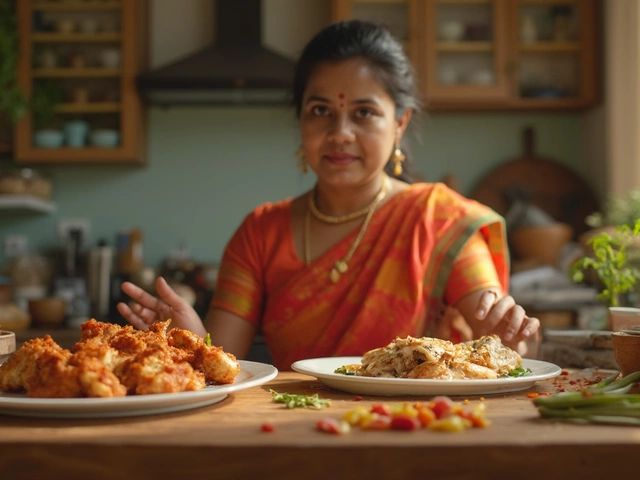Picture this: a steaming hot dosa with that perfect crispy edge and soft center! The secret lies in the fermentation, but who has the time these days to wait for hours? What if there was a way to speed up the process to just one hour without sacrificing flavor?
In this article, we'll delve into the magic world of fermentation, providing insider tips that can help even the most impatient cooks get the desired results. Whether you live in a cold climate or your kitchen is a cozy warm cocoon, we'll uncover the best tricks to give you delicious dosas in a fraction of the usual time.
- The Science Behind Fermenting Batter
- Temperature's Impact
- Modern Techniques for Speed
- Testing Quick Fermentation
- Taste and Texture Considerations
The Science Behind Fermenting Batter
Fermentation is the heart and soul of the perfect dosa batter. It's a natural process that transforms basic ingredients like rice and lentils into a batter with an airy texture and tangy flavor. But what's truly happening inside this mixture?
The magic begins with the interaction between yeast and lactic acid bacteria, naturally present in the rice and lentils. These microorganisms thrive in warm, moist conditions, breaking down carbohydrates into carbon dioxide and ethanol. This not only makes the batter rise but also contributes to its distinctive sour taste.
The Role of Ingredients
The choice of rice and dal (lentils) can significantly impact fermentation. Short-grain rice or poha (flattened rice) often speeds up the process due to their higher surface area, allowing more microorganisms to latch on. Urad dal, rich in protein and carbohydrates, provides the perfect sustenance for these tiny fermenters.
The Power of Soaking
Before blending, it's crucial to soak the rice and dal. Soaking them doesn't just soften these ingredients—it activates enzymes that kickstart the process. This prelude is as important as fermentation itself, laying the foundation for successful batter development.
Understanding Optimal Conditions
Temperature is the most significant factor affecting fermentation. Yeast and bacteria prefer balmy surroundings, ideally between 30°C to 35°C (86°F to 95°F). In colder climates, fermentation can be sluggish—enter our need to speed things up. Consider wrapping the bowl of batter in blankets or placing it in a slightly warmed oven.
| Temperature (°C) | Fermentation Time (Hours) |
|---|---|
| 20°C | 12-18 |
| 25°C | 8-12 |
| 30°C | 6-8 |
Understanding these factors allows you to harness the power of fermentation, potentially even fast-tracking the process without completely sacrificing quality. It’s a delicate balance of nature and nurture, where knowing your environment—and perhaps bending a few rules—can yield impressive results.
Temperature's Impact
The journey to quick fermentation heavily relies on understanding the role of temperature. Essentially, temperature influences the activity of the microbes that transform mundane ingredients into delightful dosa batter. It's the delicate dance of yeast and beneficial bacteria that work their magic, and they are temperature-sensitive dancers.
Optimal Conditions for Fermentation
In a warm, cozy environment, around 30 degrees Celsius (86 degrees Fahrenheit), the fermentation process is most active. The yeast becomes a bustling hub of activity, producing the carbon dioxide and organic acids that lend the dosa batter its characteristic tanginess and rise. But if your kitchen is more reminiscent of the Arctic, fret not. There are ways to coax more warmth.
Creating a Warm Environment
- Place the batter in the oven with just the light switched on. This can create a delightful microclimate that mimics a tropical sunbath.
- Preheat your oven to the lowest setting for a few minutes, turn it off, and then let the batter rest inside.
- Wrap the container with a warm towel or place it in a large insulated box.
For those blessed with warmer climates, simple room temperature might suffice. However, don't set your expectations too high if it's sweltering hot either; excessive heat can stress out the microbes.
The Delicate Balance
The key is to maintain a warm, not hot, environment. Too much heat can lead to undesirable flavors or stunt the yeast's activity once it surpasses around 40 degrees Celsius (104 degrees Fahrenheit). Like Goldilocks's porridge, the temperature needs to be 'just right' for optimal results.
By mastering temperature control, you're better equipped to produce a flavorful and airy dosa batter that can be ready in a fraction of the usual time. Adjusting this element could very well be the secret to unlocking fast fermentation triumphs right in your kitchen.

Modern Techniques for Speed
For those who crave the deliciousness of dosa but lack the luxury of time, modern culinary innovation offers creative solutions to accelerate the fermentation process. While traditional methods hold their charm, today's quick hacks accommodate our fast-paced lifestyles without compromising on quality.
Using Air Fryers and Ovens
Ever thought about using an air fryer or oven for fermenting dosa batter? It's not just for baking or frying. Set the air fryer or oven to its 'proof' setting or the lowest possible temperature around 100°F (approximately 38°C). Place the batter in an oven-safe, heat-resistant bowl, cover it, and let the warmth speed up the natural fermentation process significantly.
Incorporating Yeast
Yeast is known for its quick fermenting qualities. Introducing a tiny amount of it, say one-eighth of a teaspoon, to your batter can mimic the effects of long, slow fermentation quite effectively. This small addition paves the way for light, crispy dosa in no time, bringing out subtle sour notes akin to the traditional method.
Baking Soda Magic
Here’s a trick even your grandmother might approve! Adding a pinch of baking soda right before cooking not only increases the batter's volume but also its fluffiness. The chemistry between the alkaline soda and the acidic environment results in a quick rise, making the dosas lightweight and airy.
Exploring Fermentation Accelerators
Some households swear by adding a tablespoon of whisked yogurt or buttermilk to the dosa batter. These dairy products come packed with lactobacillus, the same bacteria that promote natural fermentation. If you're looking to speed things up, they’re a friendly addition to your batter.
To sum it up, these modern techniques allow the enjoyment of this beloved Indian staple without long waits. There's elegance in simplicity, and using these creative processes provides both, aligning perfectly with our craving for quick fermentation solutions.
Testing Quick Fermentation
The quest for quick dosa batter fermentation is all about precision, science, and a dash of culinary daring. As every seasoned cook knows, dosa's characteristic tangy flavor and airy texture largely depend on the time-honored fermentation process. But can this process be adequately mimicked in just an hour? Let’s investigate.
Setting Up the Experiment
First, gather your primary ingredients: rice and urad dal (black gram lentils) in a standard 3:1 ratio. After soaking them for a few hours, blend them into a smooth, slightly thick batter. This is your starting point, our unfermented base.
The Role of Temperature and Environment
Temperature is the key catalyst in quick fermentation. A warm environment accelerates the activity of natural yeast and lactobacilli, the batter's friendly fermenters. For rapid results, preheat your oven to its lowest setting, then turn it off, creating a warm cocoon for the batter. Alternatively, an Instant Pot set to 'Yogurt' mode can maintain a steady environment for speedy microbial activity.
Innovative Techniques
To further expedite the process, consider these modern culinary hacks:
- Adding Beta Enzymes: Introduce a teaspoon of fenugreek seeds to the batter before blending. These contain enzymes that naturally accelerate fermentation.
- Using Commercial Yeast: A pinch of active dry yeast can turbocharge fermentation, but spare it if you want to keep the flavor authentic.
- Sugar Boost: A teaspoon of sugar can give microorganisms an initial energy boost, quickening their activity in the hour you've allotted.
The Results: Does It Match Traditional Fermentation?
After an hour in a controlled, warm setting, check your batter. It should have risen, displaying bubbles on its surface and a distinct, albeit milder sour aroma compared to traditionally fermented dosa batter. The batter is now ready to be ladled onto a hot griddle, forming those beloved crepes.
Final Thoughts
The inspiration behind this expedited process does more than feed curiosity. For a true compendium of taste, texture, and tradition, the bullet train to dosa dreams requires a temporary stop at experimentation lane. Will it perfectly mimic the depth of flavor achieved by traditional methods? Perhaps not precisely. But for those days when time isn't on your side, quick fermentation could just be your dosa batter’s best friend.
Taste and Texture Considerations
When it comes to crafting the perfect dosa, taste and texture are paramount. Is it really possible to achieve that golden-brown, crispy exterior and tangy flavor profile with a rapid fermentation process? Let's dive into the elements that play crucial roles.
Role of Fermentation in Flavor
Traditional dosa batter, prepared with rice and urad dal, undergoes a fermentation process that develops complex flavors over time. Microorganisms break down sugars, releasing acids and developing a signature tanginess. Speeding up this process might truncate flavor development, making it essential to use techniques that maximize microbial activity in a short span.
Balancing Crispness and Softness
A dosa's texture can be likened to the delicate balance of opposites: a thin crispy layer outside and a soft, spongy interior. Achieving this texture within an hour involves paying attention to batter consistency and cooking methods. The batter must retain tiny air pockets created during fermentation, necessary for that soft center.
Quick Tips for Textural Success
- Use Warm Water: Mixing batter with warm water encourages faster activity of the yeast or added agents.
- Monitor Consistency: Ensure the batter isn’t too thick; a flowing consistency helps create a smooth layer.
- Optimize Pan Heat: Heat the pan just right; too hot and the batter won't spread evenly, too cold and you lose the signature crisp edge.
Evaluating Quick Fermentation Outcomes
So, how does the quick fermentation method stack up against the traditional long hours? Expect subtle differences. While the flavor may not be as developed, many enthusiasts find that adding a spoonful of yogurt or a pinch of baking soda can elevate the batter's taste profile, simulating the nuttiness achieved over prolonged fermentation.
Conclusion
While rapid fermentation can satisfy intense cravings and tight timelines, it may never fully compare to the depth provided by traditional methods. However, for those moments when time is limited, leveraging these adjustments can land you with a delicious, authentic-tasting dosa that doesn't compromise on the experience.
- Poplular Tags
- dosa batter
- ferment
- quick fermentation
- Indian cooking





